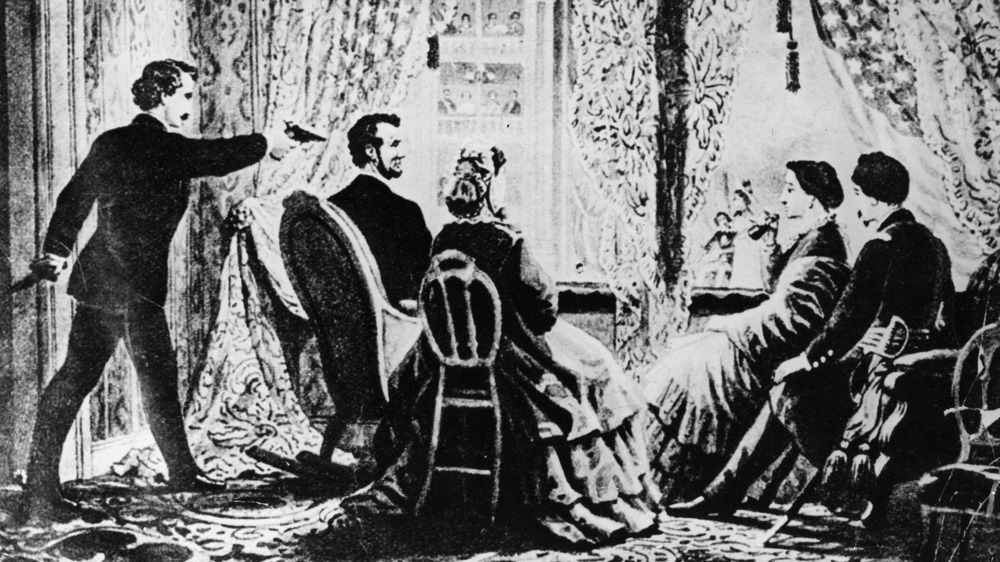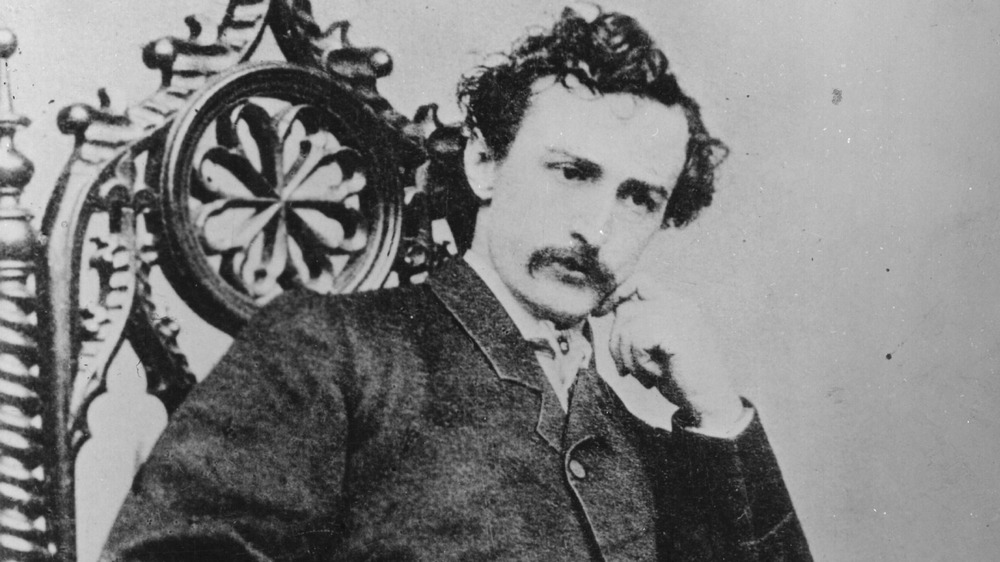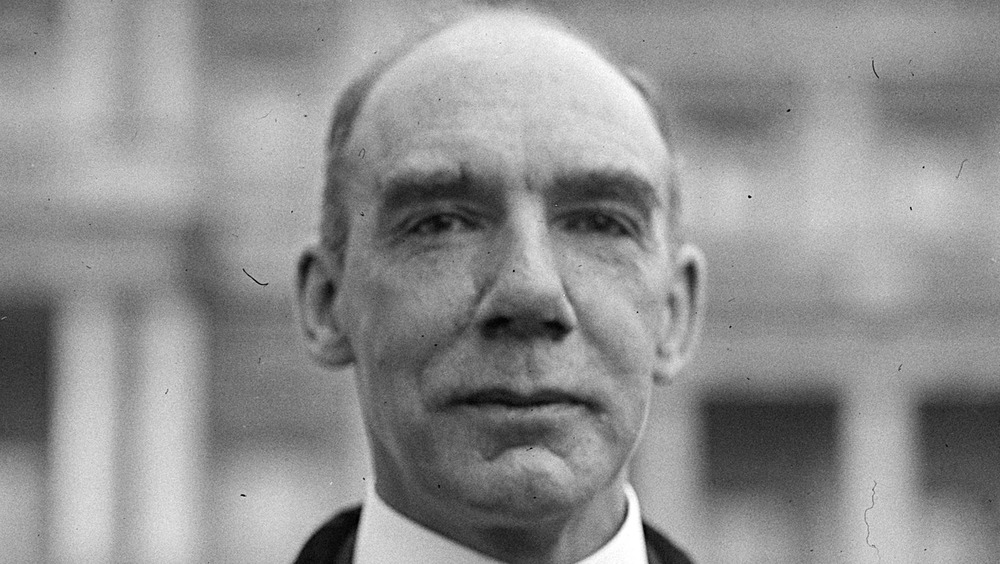What Really Happened To The Couple With President Lincoln After His Assassination
President Abraham Lincoln and his wife, Mary, had intended for General Ulysses S. Grant and his wife to join them at Ford's Theatre to see Our American Cousin, on that fateful night in April 1865. The end of the Civil War was within sight, and the Lincolns wanted to enjoy an evening with the general who had forced Confederate General Robert E. Lee to surrender his forces just days earlier. The Grants, however, declined the invitation due to business in Philadelphia, according to WETA. In their stead, the invitation was extended to Major Henry Rathbone and his fiancée Clara Harris, daughter of New York Senator Ira Harris and friend of Mary Todd Lincoln.
The president and his party arrived late to the theater that evening. But when they entered, the play was paused and they were met with resounding applause. The orchestra played "Hail to the Chief," as ushers led the four to the Presidential Box. While the four enjoyed the play, actor and southern sympathizer John Wilkes Booth, armed with a sharp dagger and a .44 caliber Derringer pistol, lurked upstairs in the corridors and waited for the perfect opportunity to impose his own plot. At the moment Booth knew the audience would erupt in thunderous laughter, he slipped into the box, aimed his pistol at the back of Lincoln's head, and pulled the trigger.
John Wilkes Booth severely cut Major Rathbone with a dagger
Gun smoke filled the area, but Major Rathbone was able to see Booth and leaped from his seat to grab the assassin. "I instantly sprang toward him and seized him," Rathbone testified on May 15, 1865 for the prosecution during the conspiracy trial against Booth, according to The Trial, edited by Edward Steers. "He wrested himself from my grasp, and made a violent thrust at my breast with a large knife. I parried the blow by striking it up, and received a wound several inches deep in my left arm, between the elbow and the shoulder."
Booth escaped by jumping down from the box and finding his way out the back door. Rathbone bled profusely while three doctors in the audience tended to Lincoln before all of them were taken to Petersen House across the street for further treatment, according to Ford's Theatre. Rathbone had significant blood loss but was sent home to recover that night. Lincoln died the next morning, never having left Petersen House. Rathbone felt extreme guilt that he was unable to save the president's life, and it was something that plagued him for the rest of his life.
The Rathbones attempted a normal life before tragedy struck again
Two years later — on July 11, 1867 — Henry and Clara married. Their first child, Henry Riggs Rathbone, who would later become a congressman from Illinois, had the same birthday as Lincoln: February 12. Rathbone resigned from the Army that same year, 1870, and spent years traveling to Europe visiting doctors and spas seeking relief for his chronic dyspepsia, which had been plaguing him since Lincoln's assassination, according to Emerging Civil War. It was one of many ailments that riddled his life — he was nervous, suspicious, and frequently irrational.
The Rathbone family eventually settled in Hanover, Germany, in 1883, and Henry was crippled by severe depression. He behaved erratically, and his temperament was frequently volatile. In the early morning hours of Christmas Eve in 1883, Rathbone woke Clara with an argument before shooting and stabbing her, according to American Heritage. He then stabbed himself several times. Clara died, and he lived.
"I have no hesitation in affirming that the dreaded tragedy, which preyed upon his nervous and impressionable temperament for many years, laid the seeds of that homicidal mania," said one doctor who treated him on the evening of Lincoln's assassination, according to documents collected by The Washington Post.
Clara was buried in Germany. Henry was committed to an institution there, where he died in 1911, according to American Heritage. Decades later, in 1952, the plots that had not been visited were dug up and the remains of the Rathbones were disposed of.


